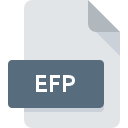.EFP File Extension

Exchange Forms Designer Template
| Developer | Microsoft |
| Popularity | |
| Category | Data Files |
| Format | .EFP |
| Cross Platform | Update Soon |
What is an EFP file?
.EFP files, also known as Exchange Forms Designer Template files, are used in Microsoft Exchange Server environments to create customized forms for email messages, appointments, contacts, and other items. These files store the design layout, properties, and behavior of forms that can be utilized within Microsoft Outlook or other email clients compatible with Exchange Server.
More Information.
Exchange Forms Designer was introduced alongside earlier versions of Microsoft Exchange Server to facilitate the creation of custom forms. These forms enable organizations to standardize data entry, incorporate business-specific fields, and streamline processes such as request submissions, approvals, or surveys.
Origin Of This File.
The .EFP file format originates from Microsoft Exchange Server, which provides a platform for managing email, calendars, contacts, and tasks within an organization. Exchange Forms Designer, a component of Exchange Server, allows administrators or developers to design custom forms tailored to specific business needs.
File Structure Technical Specification.
.EFP files contain XML-based markup defining the structure, layout, properties, and behavior of the form. They may include elements such as fields, tabs, buttons, scripts, and rules governing form behavior. The structure adheres to the specifications outlined by Microsoft for Exchange Forms Designer.
How to Convert the File?
Windows:
- Microsoft Exchange Forms Designer: Use the Exchange Forms Designer application on Windows to open the .EFP file. Once opened, you may have options within the application to export or convert the form to a different format.
- Third-party Conversion Tools: Explore third-party software solutions designed to convert Exchange Server forms or .EFP files to alternative formats compatible with Windows applications.
Linux:
- Wine Compatibility Layer: Install Wine, a compatibility layer for running Windows applications on Linux systems. Use Wine to run Microsoft Exchange Forms Designer and attempt to open and convert the .EFP file.
- Virtualization: Set up a virtual machine running Windows on your Linux system using software like VirtualBox or VMware. Install Exchange Forms Designer within the virtual machine to access and convert the .EFP file.
Mac:
- Virtualization: Similar to Linux, utilize virtualization software like Parallels Desktop or VMware Fusion to run a Windows virtual machine on your Mac. Install Exchange Forms Designer within the virtual environment and convert the .EFP file.
- CrossOver: Consider using CrossOver, a commercial compatibility layer that allows running some Windows applications directly on macOS without the need for a full Windows installation. Test if Exchange Forms Designer can be run through CrossOver to convert the .EFP file.
Android:
Currently, there are no native methods for converting .EFP files on Android devices due to the specialized nature of these files and their association with Windows applications. However, you may explore remote access solutions to access Windows applications running on a remote server or desktop from your Android device.
iOS:
Similar to Android, there are no direct methods for converting .EFP files on iOS devices. Remote desktop or remote access applications may provide a way to access Windows-based conversion tools or applications running on a remote desktop or server from your iOS device.
Advantages And Disadvantages.
Advantages:
- Customization: .EFP files allow organizations to tailor forms precisely to their requirements, enhancing efficiency and consistency in data collection.
- Integration: Custom forms seamlessly integrate with Microsoft Outlook and other Exchange-compatible email clients, ensuring widespread accessibility.
- Automation: Forms can incorporate scripts and rules to automate processes, reducing manual effort and ensuring adherence to predefined workflows.
Disadvantages:
- Complexity: Designing and managing custom forms can be complex, requiring expertise in Exchange Forms Designer and XML markup.
- Compatibility: .EFP files are primarily compatible with Microsoft Exchange Server environments, limiting their use outside of this ecosystem.
- Maintenance: Updating or modifying forms may necessitate careful planning and testing to avoid disruptions to existing workflows.
How to Open EFP?
Open In Windows
.EFP files can be opened directly within Microsoft Exchange Forms Designer or imported into Microsoft Outlook for editing.
Open In Linux
While Exchange Forms Designer is not natively available for Linux, .EFP files may be opened using virtualization or compatibility software running Windows applications.
Open In MAC
Similar to Linux, Mac users can utilize virtualization or compatibility software to run Exchange Forms Designer for opening .EFP files.
Open In Android
.EFP files are not typically supported on mobile platforms due to their association with server-side Exchange environments.
Open In IOS
.EFP files are not typically supported on mobile platforms due to their association with server-side Exchange environments.
Open in Others
Opening .EFP files on other platforms may require similar methods as mentioned for Linux and Mac, such as virtualization or compatibility layers.













